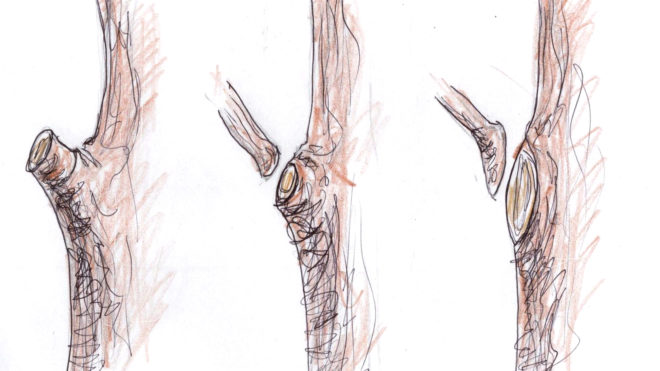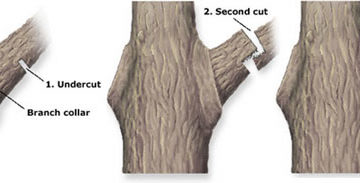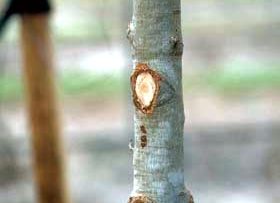Proper pruning enhances the beauty of almost any landscape tree or shrub, while improper pruning can ruin or greatly reduce its potential. Proper tree pruning is essential in developing a tree with a strong and desirable form.
Reasons for Pruning
- to train the plant
- to maintain plant health
- to improve the quality of flowers, fruit, foliage or stems
- to restrict growth.
Pruning should follow a definite plan. Consider the reason you are pruning before making any cuts. First remove all dead, broken, diseased or problem limbs by cutting them at the point of origin or back to a strong lateral branch. Often, removing this material opens the canopy up enough so that no further pruning is needed.
Make sure that, with all of your cuts, you do not leave stubs or make harmful flush cuts. Learning to identify the branch collar and make an according cut is invaluable when in comes to pruning.
The next step is to make any training cuts that are needed. Training cuts are any pruning cuts on a younger tree that will direct the trees growth and shape. A tree that has been given the proper training when it is young will have a good branch srtucture that will carry the weight of it’s own canopy and the forces of weather very effectivly. To properly train a plant you need to have an understanding of it’s natural growth habit . Trying to prune a plant into a form or manner that is contrary to it’s natural habit will destroy the natural beauty of the plant and can even result in poor plant health.

When to Prune

This young tree is developing a double leader. This should be pruned out to improve the structure and future growth of this tree.
Generally speaking, pruning can be done at any time of the year, but recommended times vary with different plants. Though it is believed by
many that pruning at the wrong time of year will kill a plant, this is usually not true. For most plant species, winter pruning and early spring is ideal. This is because the trees are dormant and there is little to no threat of invading insect and disease problems. Avoid pruning evergreens and most other trees in the heat of summer or during periods of drought. Pruning can encourage new growth and this is to be avoided when trees are already under stress. Also keep in mind that, if you prune too soon after the initial rush of new spring growth, a good deal of stored energy has gone into putting out that new growth that has not been replaced by photosynthesis yet.
A good rule of thumb to know when to prune is to prune plants that flower on last years growth soon after blooms have faded, and prune plants that flower on this years new growth in winter or early spring before new growth begins.
There are many other consideration to proper pruning that can be learned with time and practice that we can discuss in other posts. This should be, however, a good start to give you an understanding of the basics.
Happy pruning!



